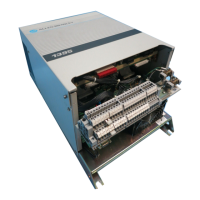1-2 Understanding the Basic Principles
ESD Sensitivity Precaution
During Start-up the following information should have been recorded for
reference during troubleshooting. If it was not, record the following at this
time:
• An accurate list of Drive Setup and Configuration parameters, in case the
EEPROM is corrupted. Tables are supplied in Chapter 6 for this purpose.
• Software Version numbers should be recorded for each board. These are
necessary to provide to on-site personnel or when calling for assistance.
• Drive and motor nameplate data should have been recorded at start-up
and maintained for ready reference during troubleshooting. Many
systems do not allow for easy access to the motor after startup. If the
motor nameplate data was not recorded previously, attempt to do so at
this time.
!
ATTENTION: This Drive may contain ESD (Electrostatic
Discharge) sensitive parts and assemblies. Static control
precautions are required when installing, testing, servicing or
repairing this assembly. Component damage may result if ESD
control procedures are not followed. If you are not familiar with
static control procedures, reference U.S. Department of Defense,
DOD-HDBK-263, Electrostatic Discharge Control Handbook for
protection of Electronic Parts, Assemblies and Equipment or any
other applicable ESD Protection Handbook.
!
ATTENTION: When replacing boards containing firmware
EPROM modules, Do Not transfer EPROMs from the damaged
board to the replacement board. Electrostatic Discharge (ESD),
Electromagnetic Interference (EMI), excessive heat,
contamination of printed circuit boards (PCB), and connections
that are damaged or improperly seated, etc., can cause serious
malfunctions to occur in the 1395 drive. An attempt should be
made to correct any of these environmental conditions prior to
installing new components.
Aotewell Ltd industry-mall.net

